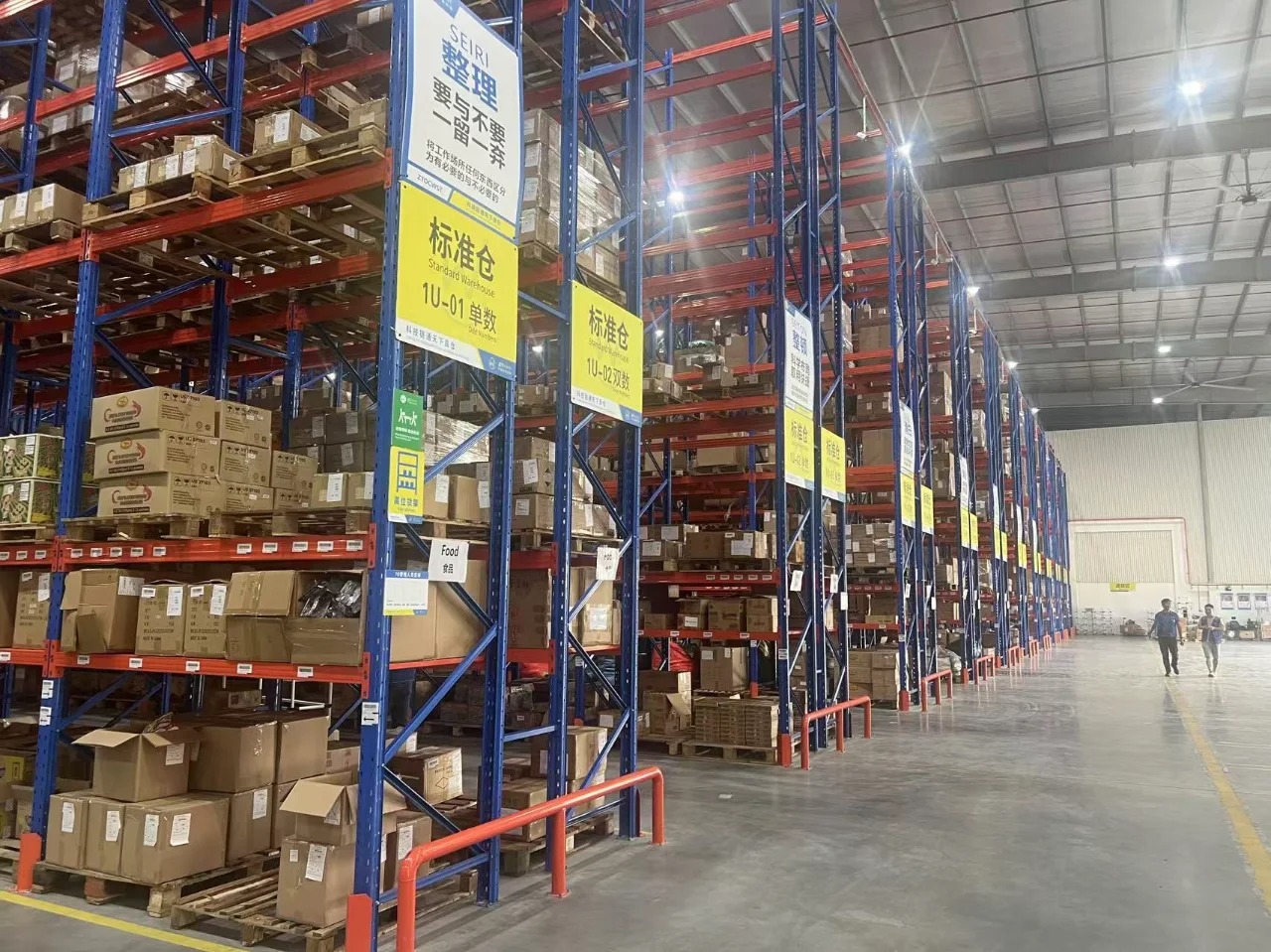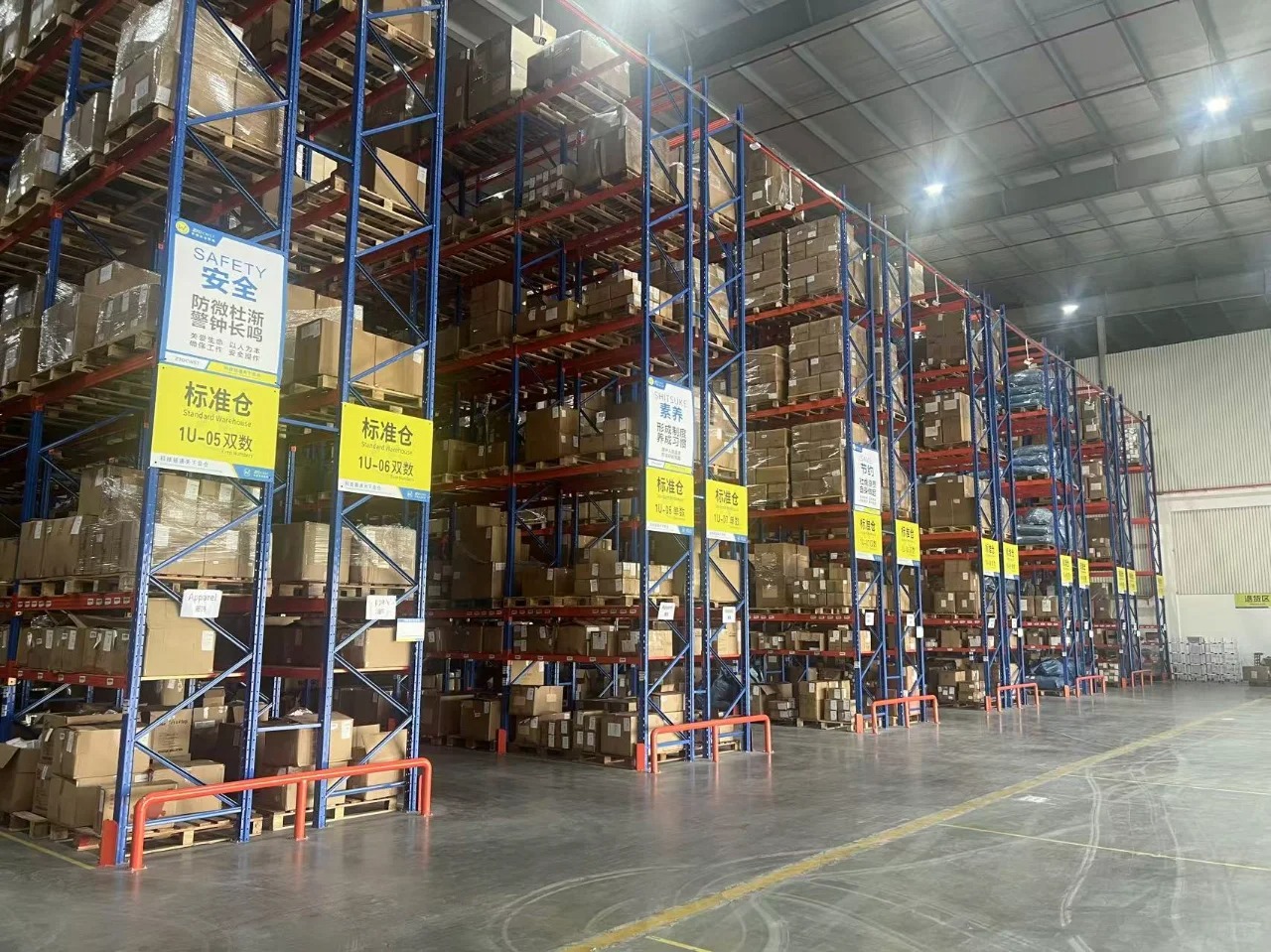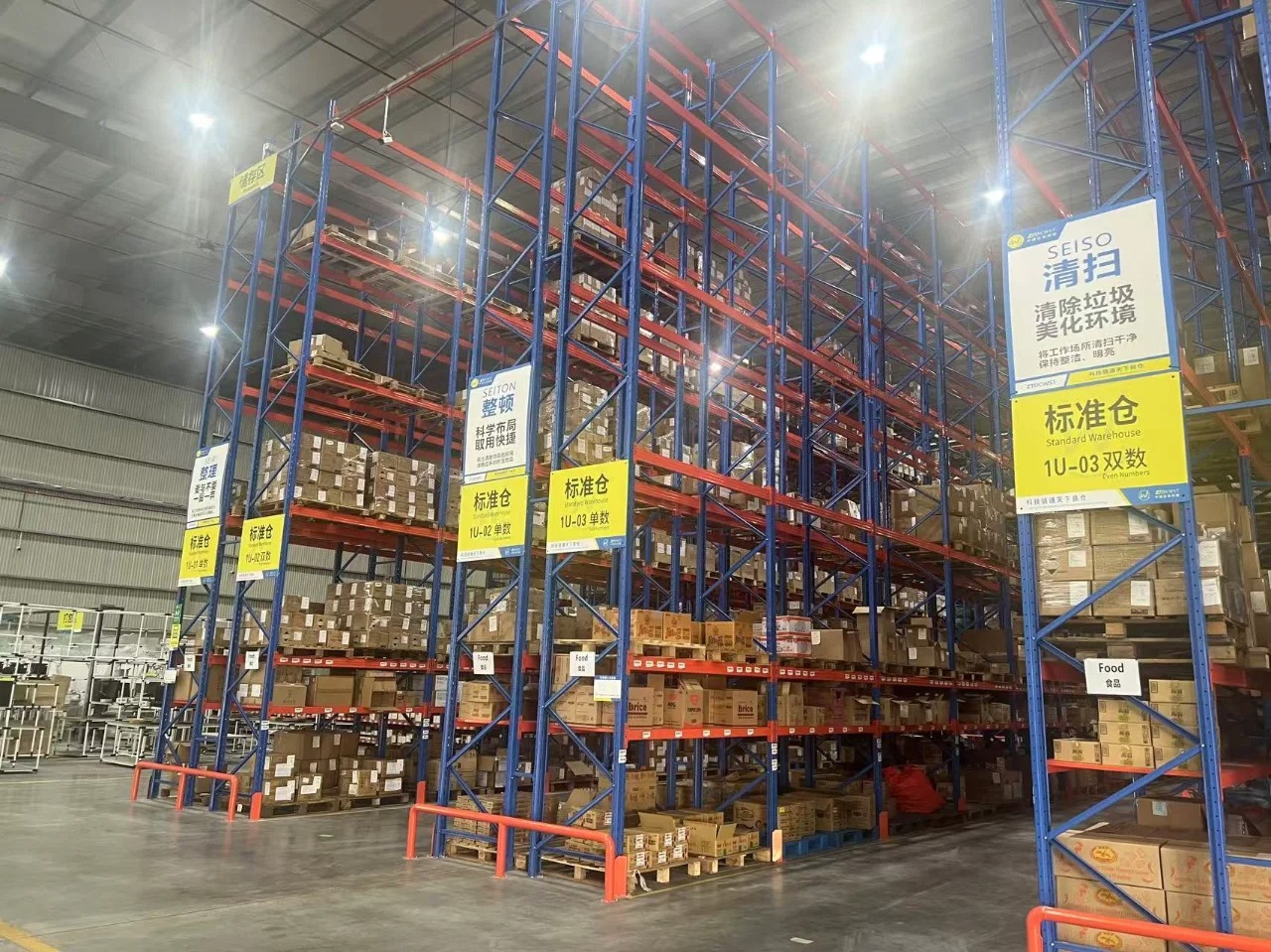Heavy duty pallet rack shelving systems are an alternative type of racking, widely used in warehouses with frequent goods movement. Therefore, safe use and maintenance of heavy duty pallet rack shelving are crucial. This article aims to provide tips for using and maintaining heavy duty pallet rack shelving.

When storing goods, weight should be evenly distributed to avoid single-point concentrated loads exceeding the design standard. Heavy items should be placed on the lower shelves, and light items on the upper shelves to maintain a stable center of gravity. Palletized goods should be placed completely on the crossbars and should not overhang or extend beyond the shelf edge.
The weight difference between loads on the same crossbar level should not exceed 30% to prevent uneven load on the shelf. When storing and retrieving goods, use appropriate handling equipment, such as a forklift, and be careful to avoid collisions with the shelves. Climbing on the shelves to retrieve goods is prohibited; dedicated climbing equipment should be used.
When operating forklifts and other warehouse equipment, maintain a low speed. Speed limit signs should be clearly displayed within the racking area. Forklift operators should receive professional training and be familiar with the aisle width and turning radius requirements of the racking. When storing and retrieving goods, operate directly across the shelf to avoid diagonal insertions that could cause uneven load on the shelf. Regularly check the racking area for obstructions that could affect operating space and maintain clear aisles. Ensure adequate lighting in the work area at night or during low-light conditions to prevent operational errors caused by poor visibility.
Heavy-duty crossbeam racks should have a regular inspection system. A monthly inspection is recommended. Inspections should include:
1. Check for bent, deformed, or cracked columns.
2. Check crossbeam connections for looseness, and ensure safety pins are intact.
3. Check for deformed or damaged shelves.
4. Check for loose floor bolts.
5. Check for peeling anti-corrosion coating on the shelf.

Record each inspection and address any issues promptly. Increase inspection frequency for areas with high usage.
If slight column deformation is detected, immediately reduce the load in that area and observe whether the deformation continues. If deformation persists, remove the shelf from use and contact a qualified professional for repair or replacement.
If crossbeam connections become loose, first remove the load and then retighten all fasteners. Missing or damaged safety pins must be replaced immediately and not used. Shelves showing significant deformation or cracking should be replaced promptly; temporary repairs are prohibited.
If the surface anti-corrosion coating has peeled, first clean the rusted area and then apply a repaint. The repaint material should be compatible with the original coating to ensure effective corrosion protection.

Anti-collision guardrails or column protectors should be installed at both ends of the racks and at aisle corners to reduce damage caused by collisions with forklifts and other equipment. Anti-collision devices should be at least 1 meter high and made of a flexible material that effectively absorbs impact energy.
For narrow-aisle racking systems, consider installing guide rails or floor markings to guide forklifts along the correct route. In areas with frequent traffic, prominent warning signs and barrier structures should be installed.
Each shelf level should be clearly marked with its maximum load capacity; overloading is prohibited. The warehouse management system should record the storage status of each shelf location to prevent overloading caused by human error.
Consider installing an electronic weighing system or pressure sensor to monitor shelf loads in real time. When safety limits are approached or exceeded, an alert will be issued, prompting operators to adjust the distribution of goods.
In earthquake-prone areas, heavy duty pallet rack shelving should incorporate additional seismic measures. Horizontal tie bars can be installed at the top of the rack to increase overall stability. Column-to-ground connections should use specialized seismic fittings to enhance lateral force resistance.
Rack design should incorporate an appropriate seismic coefficient to ensure adequate safety margins in the event of a sudden earthquake. Elevated racks also require special attention to prevent falling goods, perhaps by installing guardrails or safety nets.
 Wechat
Wechat
 Whatsapp
Whatsapp